Do not be conned by green labels. Green symbols are not all they seem, and if your business is serious about green issues and wants to use environmentally friendly products to gain a credible green reputation you must understand the world of ecolabels. The Stern Report says that labelling and sharing best practice can help businesses and consumers make sound decisions. But you need to know, for example, the differences between an “Angel” a “Swan” and a “Flower” logo, understand why recycling symbols are not all they seem and get to grips with a whole range of new symbols, signs and acronyms to improve your green credentials.
The very best environmentally green labels provide proof that the products and services match certain criteria. The worst environmental symbols are irrelevant and not backed up by any information or detail, and may simply mean that the packaging is recycled (or maybe just recyclable!). Of course being able to promote a strong ecolabel yourself is also a strong marketing tool to boost business.
Buying the right products can save money, help the planet and promote business in a very positive way, but there a lot of unfounded claims written about products in an effort to secure a business advantage. Criteria can vary from the entire manufacturing process to the origin of the raw materials, depending on the label so read on.
 Blue angel eco label
Blue angel eco label
Germany set up the world’s first eco-labelling programme in 1977. Blue Angel involves over seventy product groups, with over 4,000 approved products. The label is made up of a blue figure with outstretched arms surrounded by a blue ring with a laurel wreath. “Umweltzeichen” (environmental label) is at the top of the logo, and a second inscription for the individual product group is found at the bottom.
The criteria for awarding the Blue Angel includes: the efficient use of fossil fuels, alternative products with less of an impact on the climate, reduction of greenhouse gas emission and conservation of resources. Once approved, eco-labelled products are reviewed every two or three years to reflect the latest developments in ecological technology and product design. For recycled paper to qualify for the mark, it must be made of 100% waste paper (tolerance 5%) and contain at least 51% low grade or medium grade scrap and wastes containing kraft (sulphate pulp) papers.
Contact www.blauer-engel.de
Nordic white swan
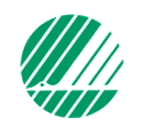 This is the official Scandinavian label and was set up in 1989. It is awarded to products that reduce the consumer burden on the environment, taking into consideration the product’s impact on the environment throughout the product’s lifecycle, from raw material to waste. Its criteria are based on the environmental effects of the manufacturing process rather than the selection of raw material and it does not necessarily imply that the product contains any recycled fibre.
This is the official Scandinavian label and was set up in 1989. It is awarded to products that reduce the consumer burden on the environment, taking into consideration the product’s impact on the environment throughout the product’s lifecycle, from raw material to waste. Its criteria are based on the environmental effects of the manufacturing process rather than the selection of raw material and it does not necessarily imply that the product contains any recycled fibre.
Contact the Swedish Standards Institution www.sis.se
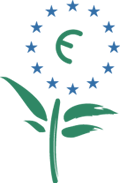 European ecolabel – the flower
European ecolabel – the flower
This voluntary European Union scheme was set up in 1992 to indicate a product has been independently assessed and has a lighter environmental footprint than similar products performing the same function. The UK was the first EU country to issue the flower label to a product, and has invested over £5 million in running and promoting the scheme run by the Department for Environment, Food and Rural Affairs which is the official UK Ecolabelling Competent Body. Big and small companies who share a commitment to good environmental practice and have a high quality product can apply. Obtaining a Flower logo is a public and credible commitment as it is comprehensive and applies to all the environmental impacts of a product (not just energy for example) over its whole life through to disposal. Because the logo covers so many different kinds of products it will become increasingly visible in the European market place.
For information on how to apply for ecolabels contact: www.defra.gov.uk
 The green dot or the grune punkt
The green dot or the grune punkt
On an item of packaging means that it complies with the German Packaging Ordinance for the return of consumer packaging. The symbol can in fact be any colour other than red and it shows that a fee has been paid for the recovery of the packaging in some European countries.
 Recycle now
Recycle now
This logo is increasingly being used in the UK to indicate that the product or material may be readily recycled. It is managed by WRAP (the Waste & Resources Action Programme) and is used to encourage householders to recycle, but is still dependent upon local provision of facilities.
 The mobius loop
The mobius loop
The internationally recognised recycling symbol is the three chasing arrows icon. Each arrow represents an aspect of a successful recycling programme: collection, remanufacturing, reprocessing into a new product, and finally purchase by the consumer. This symbol is only supposed to be used on goods that are “recyclable” or include “recycled content”, but it has no precise meaning. The symbol is most commonly found on cardboard packaging and denotes that the item is recyclable. If the centre of the loop contains a number it means an item is made from a certain percentage of recycled materials. However use of this symbol is voluntary. Some goods contain recycled materials but do not carry this symbol. Recycled content does not mean it is necessarily better for the environment and it is often inappropriate, particularly for packaging used for food, toiletries and cosmetics. If the recycled symbol has solid arrows within an outer black circle this denotes that at least some content came from recycled material. This symbol is also seen with arrows of a particular colour.
The point to remember about recycling labels is that the presence of what appears to be a recycling symbol does not necessarily means that the product will be accepted locally. Producers are increasingly manufacturing their goods for a European or worldwide market and are obliged to include a variety of symbols with can appear misleading. Some symbols are not for the benefit of the consumer but for the waste handling and disposal industry.
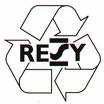 RESY
RESY
A similar symbol to the mobius loop is the RESY symbol, which guarantees that the packaging is recyclable and will be accepted by cardboard recyclers.
Other useful websites, particularly for business recycling include: www.wastelink.co.uk, www.wasteonline.org.uk, www.wastepoint.co.uk and www.recyclenow.org.uk
 NAPM
NAPM
This is the environmental label for the National Association of Paper Merchants, and to be given this mark paper or board must be made from a minimum of 75% genuine waste paper and/or board fibre, no part of which should contain mill-produced waste fibre. The NAPM website has a list of over 50 approved brands of paper, which have to comply with clear and specific guidelines. Renewal of certification takes place every two years to ensure compliance. To simply label paper as “environmentally friendly” is meaningless unless explained and justified. Some papers have less environmental impact than others and considerations such as fibre source, energy issues, water effluents, gaseous emissions and solid wastes need to be taken into consideration.
Contact: www.napm.org.uk
 Paper profile
Paper profile
This is a voluntary environmental product declaration, providing standardised environmental information across the product’s lifecycle. It covers relevant environmental aspects relating to pulp and paper produce including product composition, emissions, wood procurement and environment management. It is a registered trademark in many countries. Independent verification of the data is optional.
Contact www.paperprofile.com
 Forest stewardship council certification (FSC)
Forest stewardship council certification (FSC)
The FSC promotes responsible management of the world’s forests and sets international standards for forest management. The FSC trademark provides international recognition to organisations that support the growth of responsible forest management. The FSC trademark indicates products which contain wood from well managed forests independently certified in accordance with the rules of the Forest Stewardship Council. Certified timber complies with a set of ten principles including biodiversity protection, reduced environmental impacts, protection of indigenous people’s and workers rights and sustainable replanting. In the past 10 years over 73 million hectares in more than 72 countries have been certified in accordance to FSC standard.
Contact www.fsc.org
 Pan- european forest certification council (PEFC)
Pan- european forest certification council (PEFC)
The PEFC logo indicates wood-based products from sustainable forest management. PEFC is an independent non profit; non government organisation which promotes sustainable managed forests through independent third party certification, and is the world’s largest certification scheme.
Contact: www.pefc.org
 Soil association symbol
Soil association symbol
Soil Association symbolises a national independent quality mark for organically grown food and other products such as compost. Awarded to farmers, growers, food processors, distributors, retailers and industrial manufacturers who follow the standards laid down by the Soil Association (no use of artificial chemicals in the production process and minimum animal welfare standards).
Contact www.soilassociation.org.uk
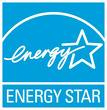 energy star logo
energy star logo
This logo is a joint EU and USA initiative to identify and promote energy efficient office equipment from faxes, to scanners, computers to photocopies. The logo means that energy consumption of an appliance is below an agreed level in ‘stand-by’ mode and that the equipment is generally energy efficient. Companies can save up to 25% of energy costs with energy saving office equipment.
Contact /www.energystar.gov/
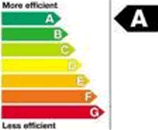 European union energy labels
European union energy labels
Fridges, freezers, washing machines etc, have to be sold with an energy label which allows comparison of the most energy efficient models on a scale of A-G. (A is the most efficient.)
Contact www.defra.gov.uk and www.saveenergy.co.uk
 Energy efficient recommended logo
Energy efficient recommended logo
This complements the European Energy Label, and indicates that a product meets or exceeds specified energy efficiency requirements backed by the government.
 Global ecolabelling network (GEN)
Global ecolabelling network (GEN)
By exchanging information and informing the public GEN aims to help harmonise the many schemes around the world.
 Green tourism
Green tourism
The UK has a Green Tourism business scheme, mainly in Scotland but now available in parts of England. Contact www.greenbusiness.co.uk



